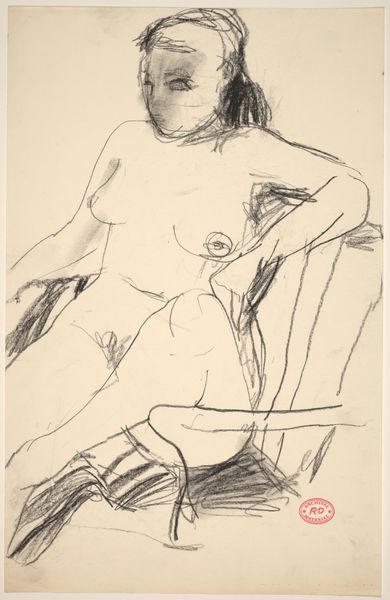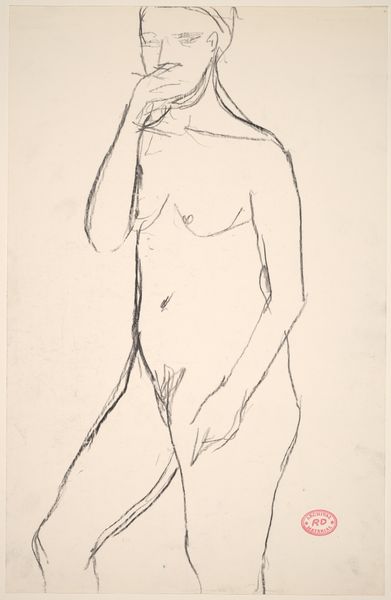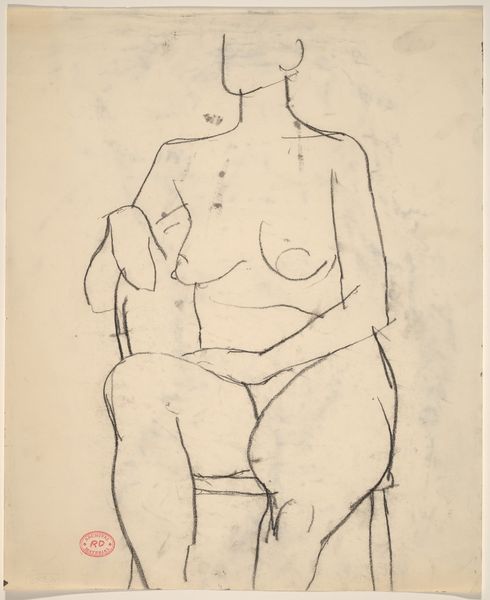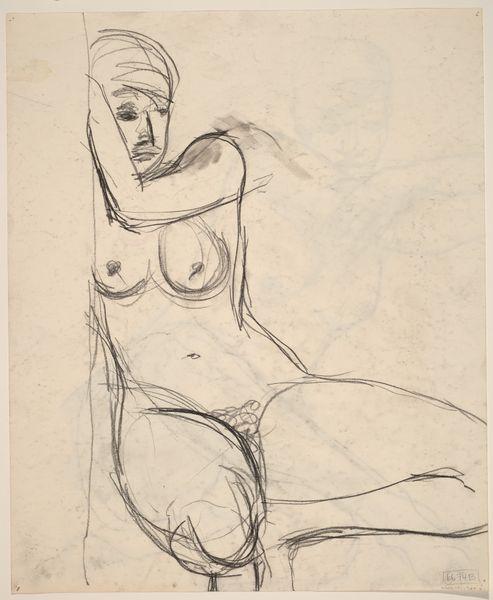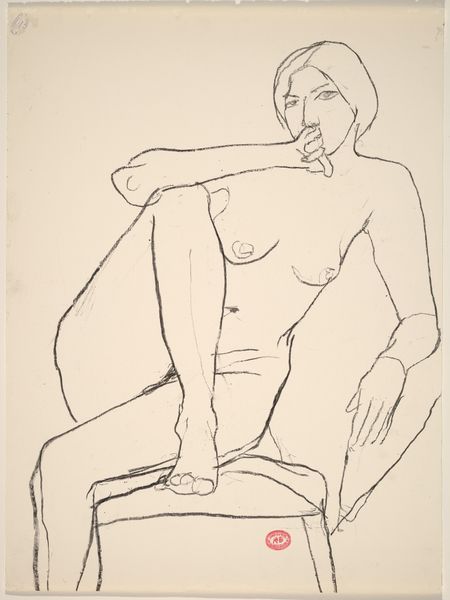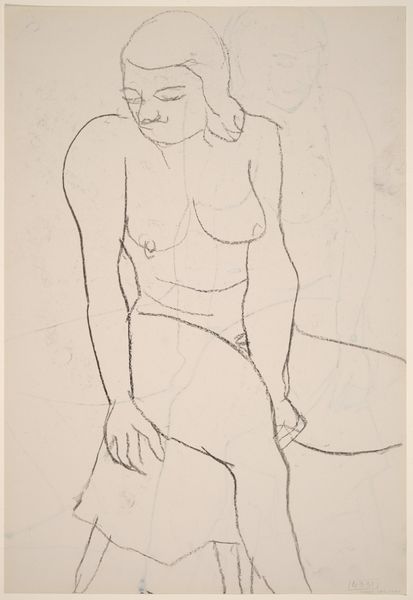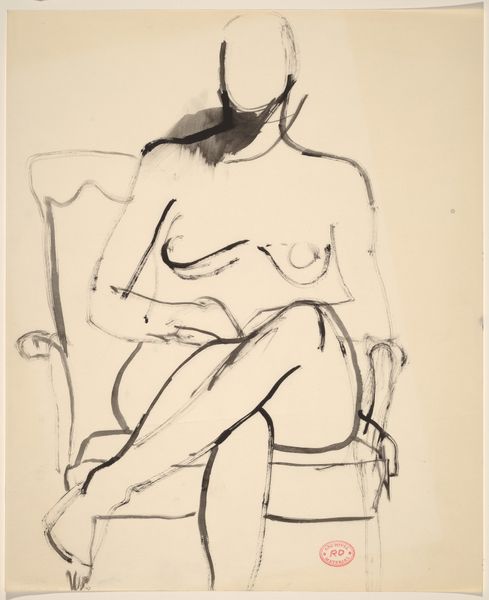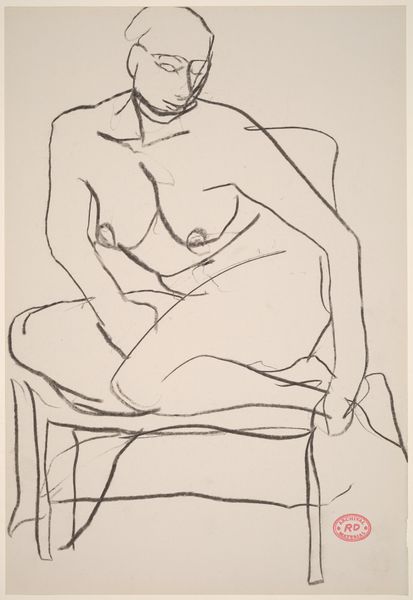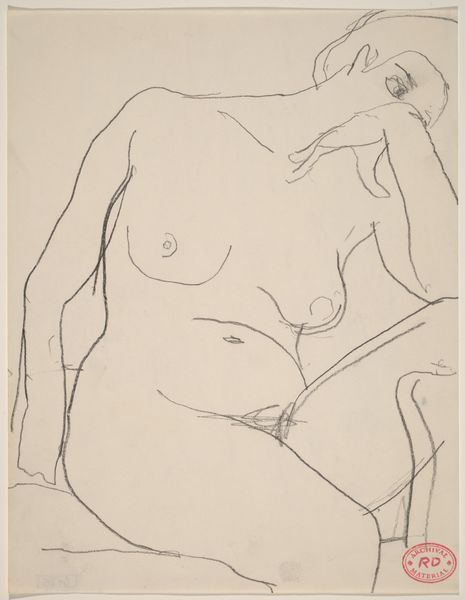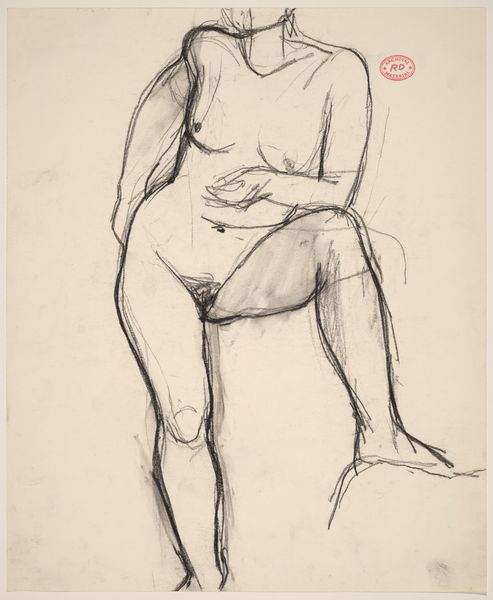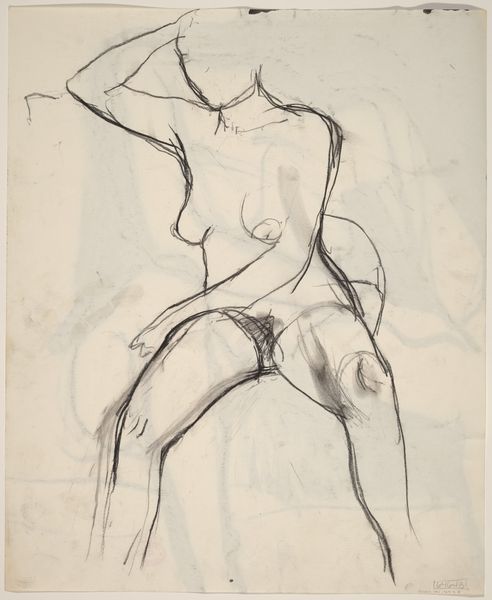![Untitled [seated nude turning her head to the right] [verso] by Richard Diebenkorn](/_next/image?url=https%3A%2F%2Fd2w8kbdekdi1gv.cloudfront.net%2FeyJidWNrZXQiOiAiYXJ0ZXJhLWltYWdlcy1idWNrZXQiLCAia2V5IjogImFydHdvcmtzLzI4NDk4ZjM5LThhOGYtNGMxYS1iZWQ0LWMwZmNiYTJmNjVmMy8yODQ5OGYzOS04YThmLTRjMWEtYmVkNC1jMGZjYmEyZjY1ZjNfZnVsbC5qcGciLCAiZWRpdHMiOiB7InJlc2l6ZSI6IHsid2lkdGgiOiAxOTIwLCAiaGVpZ2h0IjogMTkyMCwgImZpdCI6ICJpbnNpZGUifX19&w=3840&q=75)
Untitled [seated nude turning her head to the right] [verso] 1955 - 1967
0:00
0:00
drawing, pencil
#
portrait
#
drawing
#
ink drawing
#
pencil sketch
#
figuration
#
bay-area-figurative-movement
#
pencil
#
portrait drawing
#
nude
Dimensions: overall: 43.2 x 35.6 cm (17 x 14 in.)
Copyright: National Gallery of Art: CC0 1.0
Curator: This drawing by Richard Diebenkorn, tentatively dated between 1955 and 1967, presents a seated nude figure rendered in pencil. It is part of his exploration of figuration, a theme recurrent in his work. What’s your initial impression? Editor: The economy of line is striking. It feels immediate, like a fleeting observation captured swiftly. The doubled lines, almost like a ghost image behind the figure, suggest movement or perhaps a shift in perspective, making me focus on form and dynamism over static representation. Curator: That sense of immediacy resonates with Diebenkorn's approach during that period. We need to consider the socio-political context; his shift away from pure abstraction toward figuration was, in part, a response to the prevailing artistic currents. There was a renewed interest in depicting the human form in a way that acknowledged both its beauty and its vulnerability. Editor: Yes, and how that vulnerability is so beautifully rendered here. The slightly awkward angle of her body and the lack of precise definition force the eye to travel, piecing together the image. It resists the male gaze, somehow, even though it's a nude. I find myself tracing the relationships between the curves and angles. The pose certainly conveys a lived experience rather than idealized form. Curator: Exactly. The social role of art was changing, especially in California where Diebenkorn was working. The Beat Generation, civil rights movements... artists were compelled to engage with reality differently. The very act of sketching a nude could be interpreted as a statement about the body as a site of personal and political meaning. Editor: Looking again, the lack of heavy shading or meticulous detail directs attention to the architecture of the pose and how it occupies space. Note also the relationship between figure and ground; see how they seem to merge. The faint double line gives the image the quality of being on the move even though the subject is static. Curator: This drawing reveals how Diebenkorn negotiated between formal concerns and socio-cultural reflections. His legacy shows the public the changing perception of the female figure through time and art history. Editor: A powerful image that reminds us beauty does not need be polished to engage us. Curator: Indeed. It allows the viewer to construct their interpretation through the simple expressive lines.
Comments
No comments
Be the first to comment and join the conversation on the ultimate creative platform.
